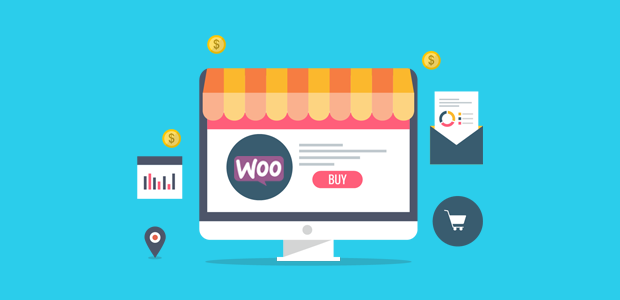It’s no doubt that eCommerce is not only the in thing but also among the leading sectors today. In fact, several industry specialists foresee the industry hitting and exceeding the $2 trillion sales mark in the next couple of years.
The beauty of online shopping is that you can get whatever you purchase delivered to your preferred address. However, let this seemingly flawless process deceive you. A lot comes into play to make sure your order is processed. If you’re interested in running an eCommerce site, here are several pointers to kick start your journey and assist you in getting the development phase done right the first time:
Contents
12 Steps to Create an Effective eCommerce Website
- Buy a Domain Name
- Recruit a Competent Web Development Expert
- Ensure you have the Necessary Permits
- Choose a Hosting Platform
- Your Theme Should Complement the Ecommerce Website Vision
- Take it Live
- HARO
- Pitchbox
- Individualized Outreach
- Incorporate a Payment Gateway
- Facebook’s Product Catalog and Google Shopping
- Consider your Storage, Shipping, and Packaging Options
1. Buy a Domain Name
Ensure that the name you pick properly represents your business/brand. Nevertheless, it’s a straightforward undertaking. Using sites such as GoDaddy, you can buy a domain name for less than $10.

2. Recruit a Competent Web Development Expert
Launching an eCommerce website within a short duration calls for all the expert assistance you can get. Hence, ensure that you vet all your potential candidates thoroughly before settling for any particular specialist. Find out the duration it will take to complete the site development process. You can also obtain references from other website owners who have worked with the developer before. Also, when conducting your due diligence, ensure that you deal with an experienced graphic designer.
3. Ensure you have the Necessary Permits
To get things rolling legitimately, ensure that your enterprise is registered. Get a locally-based lawyer to help you create your business and look into legal matters that may affect your business. Although doing so comes at a given cost, having the relevant permits will keep your business safe once you commence your operations.
To form an LLC, nonprofit or corporation, all your articles of incorporation must be registered with the relevant office, for instance the Secretary of State in your state. Also, ensure you get a Vendor’s License from the right state agency, especially if your operation will be generating taxable sales. What’s more, bear in mind that establishing a nonprofit enterprise requires consulting the Attorney General’s office in your state to help familiarize yourself with the relevant charitable licenses.
4. Choose a Hosting Platform
Since time is of the essence, go for a renowned eCommerce platform like WooCommerce. The beauty of such a platform is that many developers are familiar with it, allowing them to incorporate payment processing, plugins and other important features with ease.

5. Your Theme Should Complement the eCommerce Website Vision
To save time, simply check out ThemeForest to find a layout that matches the kind of website you intend to run. Wondering why ThemeForest is a suitable choice? Well, it’s the leading template marketplace, with more than 28,000 web templates. Furthermore, the cost of ThemeForest’s themes starts from $2.

6. Take it Live
Once you’re devoted to establishing your enterprise, don’t hesitate to make your website live. Before you even list your product offers, instruct your web developer to create several features such as a homepage. Having a properly working site, irrespective of how it looks, is beneficial due to the following reasons:
- To begin with, it portrays some form of legitimacy when bargaining for a favorable deal with various vendors.
- Secondly, when communicating with bloggers, verifying your website’s credibility become easy.
- Lastly, a live website provides you with a platform where other sources or sites can link back to, enabling you to build SEO.
7. HARO
HARO or Help A Reporter Out is among the best search engine optimization and public relations tools out there for digital marketers and entrepreneurs to take advantage of. Aside from being free, it aids in creating extraordinary exposure (when executed correctly). Register and utilize this valuable resource to not only create media relationships for your website but also boost credibility.
8. Pitchbox
When running an eCommerce business, establishing media relations is vital. What better way to do so other than using Pitchbox? The website assists in automating your outreach effort, enabling you to concentrate on your strengths such as establishing real interpersonal relationships with the targeted individuals. It helps take care of various outreach aspects such as prospecting.
9. Individualized Outreach
Individualized associations come in handy, especially for both the media and sellers. Such close relationship allows you to stay abreast of emerging market trends. They are well-informed about most of your product offering. Hence, creating a personal relationship with such parties can bolster your eCommerce business.
10. Incorporate a Payment Gateway
This merchant service facilitates the acceptance of credit card transactions or payments via eCommerce websites. Away from popular options like Stripe and PayPal, leverage others such as 2Checkout.com to help you accept credit cards or mobile payments.
11. Facebook’s Product Catalog and Google Shopping
Start growing your serach engine optimization while the site is still in its development stage. Nevertheless, certain things can only be finalized once the ecommerce site is operational and the products are listed. To conclude the development process, ensure that you create a Google Shopping Campaign. It will assist in populating product pictures when potential customers search certain keywords.
12. Consider your Storage, Shipping, and Packaging Options
Before launching your site, ensure you know how to handle the product storage and shipment. Do you prefer warehousing or drop shipping? Which type of packaging do you plan to use? Are your product offers affected by any shipping limitations? Make sure you can answer questions before starting your operation.
Looking for a eCommerce website developers?
Top Software DevelopersFinal Thoughts
Looking at these steps, it’s evident that launching an eCommerce site is not a simple walk in the park. Nevertheless, each one of these steps are guaranteed to help you get a site that not only works perfectly but also meets your customers’ needs. Furthermore, following these pointers will give you a more hands-one involvement in building and launching your website as opposed to leaving everything to a developer.
